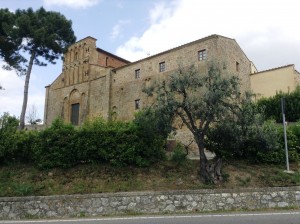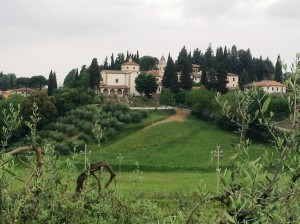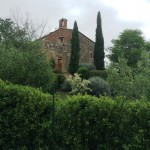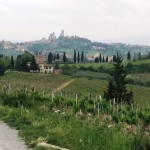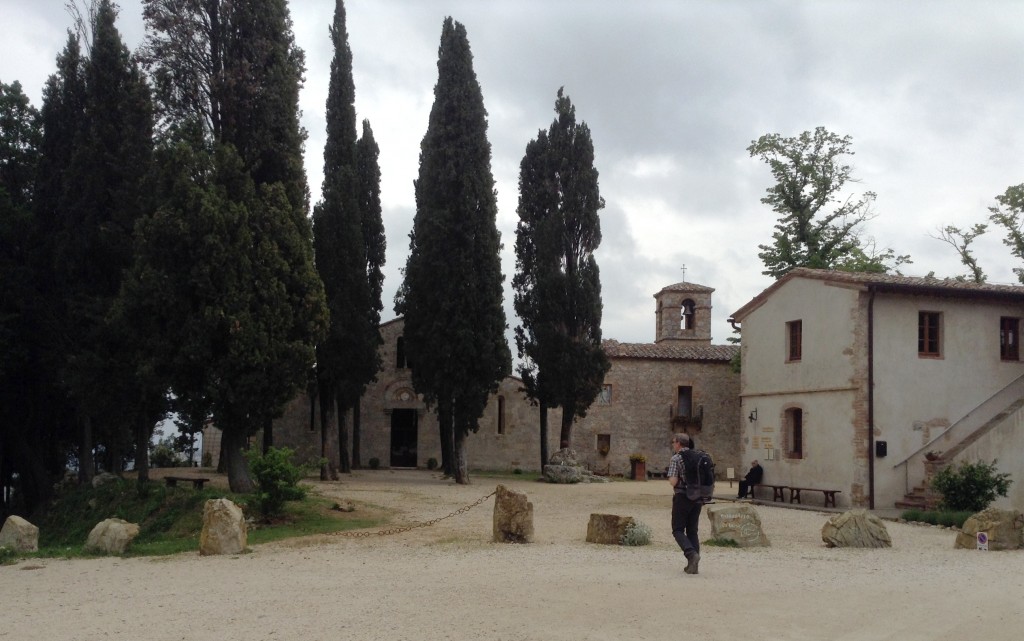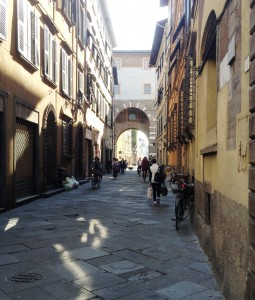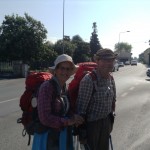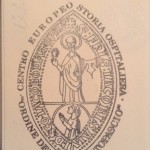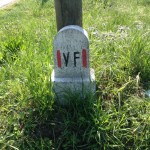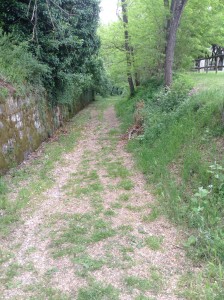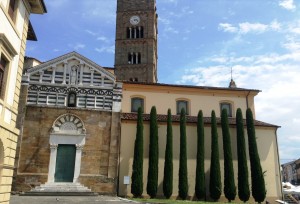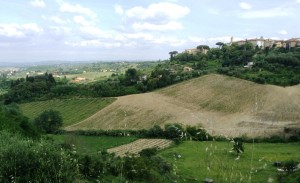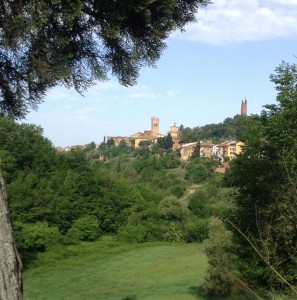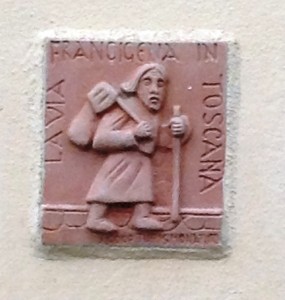 Beside the garden walls,We walk in haunts of ancient peace.
Beside the garden walls,We walk in haunts of ancient peace.
At night we rest and go to sleep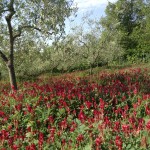
In haunts of ancient peace.
The love and light we seek,
The words we do not need to speak,
Here in this wondrous way we keep
These haunts of ancient peace.
Lyrics by Van Morrison
We began Day 4 from San Miniato early on a beautiful morning. Leaving behind the town (after coffee and pastries….necessary fuel) for our longest stage of the journey; a hefty 24 kilometres in very warm weather. However, it is strange that the very best and most varied of the scenery between Lucca and Siena should be reserved for this most isolated of stretches to Gambassi Terme. The ease of travel was due very much to the distractions of rolling meadows, glittering arcades of tree-lined woodland and the lengths of poppy-lined gravel track among shimmering grasses. Here and there a glimpse back to the buildings of the town of San Miniato that we had just left. Here and there a small cemetery or chapel to take water and food, to listen to the noises of birds, and to ease our hot feet. I wish we had taken voice recordings as well as pictures on this trip, because what appeared to be quietness was in fact a fantastic range of sounds both natural and mechanical along the way, the low hum of a tractor mingled with the simple chorus of the birds.
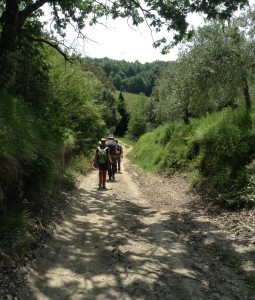 There was an ever changing scenery, mainly walking upon high ground until a last long climb up to Gambassi Terme which required a lot of ice-cream to sooth and cool the skin and body on a long but invigorating day.
There was an ever changing scenery, mainly walking upon high ground until a last long climb up to Gambassi Terme which required a lot of ice-cream to sooth and cool the skin and body on a long but invigorating day.
On and up the following day after a splendid breakfast took us through farmland and on up to high ground where we passed an fabulous agriturismo property, then on past a small church converted into a highly desirable Tuscan residence and then to the imposing Santuario di Pancole and the Convent of Santa Maria, a white church and a shrine to a young girl cured of her deafness by the appearance of the Virgin Mary. These are the memories of this stretch of the Via Francigena, the images and sounds of peace, of ancient shrines and chapels, of convents and monasteries. Such an old road where the Pope once walked to meet his gift from Switzerland of guards to protect his Palaces in 1506, a road of pilgrimage and pleasure.
As we approached San Gimignano we walked through a wonderful monastery, with a simple but gorgeous Romaneque church, the Pieve di Cellole, that echoed with reverent and soulful silence. The atmosphere was accompanied by the slow, constant and rhythmic drip of water into the font. It was a place that begged you not to leave and if you did that one day you will return and you soul healed by what was present, human and spiritual there. This place was the Monastero di Bose, and led to the busy main road into San Gimignano and the throng of tourists and also gentle the splatter of rain. Taking a beer and a sandwich on the road up the hill.
Next Stage: San Gimignano to Monteridggione coming soon.

